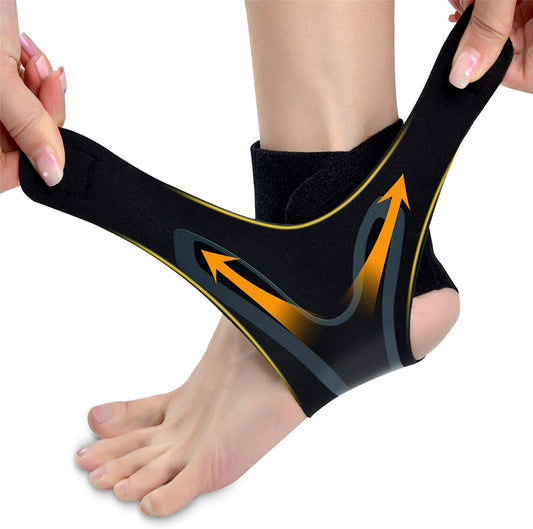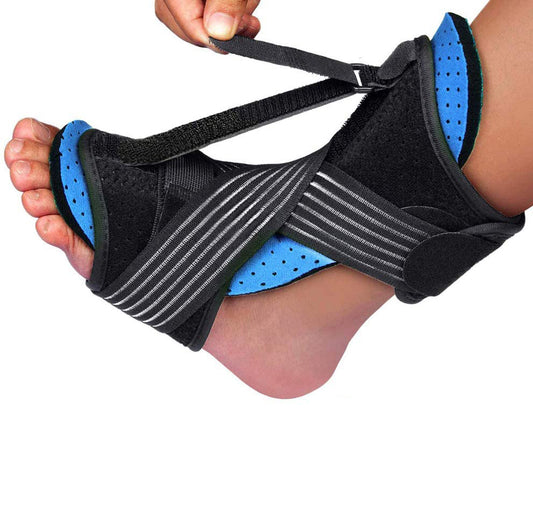What is an Ankle Foot Orthosis (AFO)?
An Ankle Foot Orthosis (AFO) is a custom brace leg worn on the lower extremity. It is designed to control the range of motion of the foot and ankle and keep them in the optimal standing position and walking. Some AFOs have a joint/hinge at the ankle, while others are fixed in one position and can be worn on one or both feet. AFO will meet your specific needs - because each person is unique, and so is their response to treatment.
What is the purpose of AFO?
The AFO is mandated for a number of reasons, including:
- Make walking easier
- Get your feet and ankles in better position
- Provides support for weak muscles
- Reduced risk of falls
- Pain relief
What shoes or clothing can an AFO wear?
The AFO should not come into direct skin contact, so you should wear cotton socks or tights under the device. Make sure they are pulled up to avoid any wrinkles. You must wear the correct shoes for the AFO to work
Appropriately. The shoes need to be big enough to fit the AFO inside, but they can be regular high street shoes. When deciding on your footwear, consider:
- Lace or Velcro fasteners are preferred: they open better the lower
- Removable sole helps make room for AFO
- Not suitable for slip-ons and slingbacks
- Bring your AFO with you when you buy shoes that need enough depth and width so you can try them on together. It is important to wear shoes when wearing an AFO. Do not wear the AFO without shoes as it will be slippery.
How to put on the AFO?
1. Sit with your hips and knees bent 90°.
2. Pull up your socks, making sure there are no creases in them.
3. Place your heel on the back of the AFO and fasten the ankle strap. It should be sturdy enough to hold the foot in place, but not too tight. Check that the heel is in place by lifting the toes up - there should be no gap and AFO between the heels.
4. Fasten the top strap. Again, this should be comfortable, but not too tight.
5. Put on your shoes.
How long should the AFO be worn?
It takes a while to get used to wearing an AFO, and it can be uncomfortable at first. Increase wear for a few weeks until you can wear it as needed:
Day 1: 30-60 minutes
Day 2: 1-2 hours
Day 3: 2-4 hours
Days 4-7: 4-6 hours
Week 2: 6+ hours or later as needed
The length of time you should wear your AFO will vary. Some users wear them regularly, others only for a few hours. Your orthotist will provide you with tailored advice. Steps, stairs and slopes feel very different when using AFO. Please be extra careful and use handrails whenever possible.
skin care
- You should check the skin around the ankle and foot, including the sole of the foot, each time you take off the AFO, especially the AFO around the bony area and edges.
-
Don't worry if you see red marks - these are normal and should disappear within 30 minutes of removal AFO. If they do not go away within this time frame, stop wearing the AFO and contact your orthopedic department.
- If you notice any blisters or ulcers, you should stop using the AFO and contact your orthopedic department for advice as it may need adjustment.
- If you have any of the following conditions, pay special attention to visual inspections that don't feel good.
AFO's Care
It is important to keep the AFO clean and in good working order.
- Wipe the AFO with a damp cloth. The straps or padding may discolour over time, but this is normal and will not affect the effectiveness of the device.
- Keep the AFO away from direct heat sources such as radiators. You can towel dry after washing, or let it dry naturally.
- Check your AFO daily for signs of damage or cracks in the material. If found, stop using the device immediately and contact your orthotist.
- If the AFO has an ankle joint, it is safe to check all screws and fasteners daily. When handling the device, be careful not to get your fingers caught in the joints.
- Make sure all shoulder straps are working properly. If they fall or break, contact your orthotist immediately.
- Do not attempt to adjust the AFO yourself, under any circumstances.





